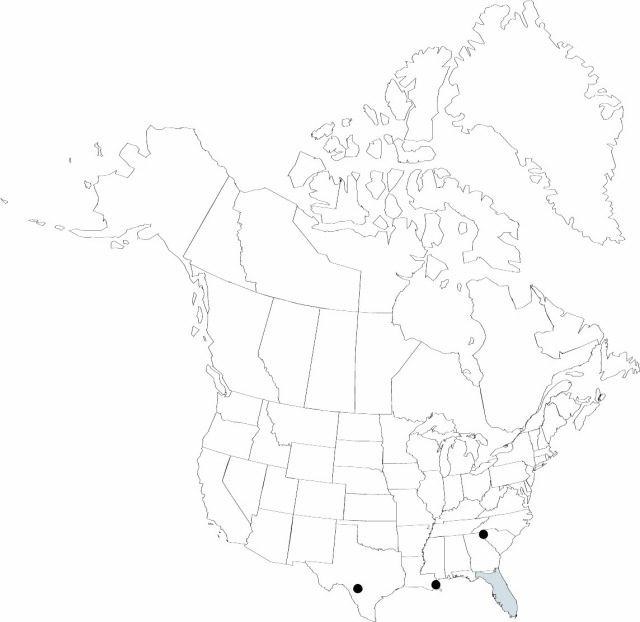Difference between revisions of "Canna indica"
Sp. Pl. 1: 1. 1753.
FNA>Volume Importer |
imported>Volume Importer |
||
| (One intermediate revision by the same user not shown) | |||
| Line 8: | Line 8: | ||
}} | }} | ||
|common_names=Indian-shot;platanillo | |common_names=Indian-shot;platanillo | ||
| + | |special_status={{Treatment/ID/Special_status | ||
| + | |code=I | ||
| + | |label=Introduced | ||
| + | }} | ||
|basionyms= | |basionyms= | ||
|synonyms={{Treatment/ID/Synonym | |synonyms={{Treatment/ID/Synonym | ||
| Line 44: | Line 48: | ||
|elevation=0–100 m | |elevation=0–100 m | ||
|distribution=Apparently Fla.;La.;S.C.;Tex. | |distribution=Apparently Fla.;La.;S.C.;Tex. | ||
| + | |introduced=true | ||
|discussion=<p><i>Canna indica</i> is probably native to neotropics and is now common throughout tropics and subtropics.</p> | |discussion=<p><i>Canna indica</i> is probably native to neotropics and is now common throughout tropics and subtropics.</p> | ||
|tables= | |tables= | ||
| Line 67: | Line 72: | ||
|publication title=Sp. Pl. | |publication title=Sp. Pl. | ||
|publication year=1753 | |publication year=1753 | ||
| − | |special status= | + | |special status=Introduced |
| − | |source xml=https:// | + | |source xml=https://bitbucket.org/aafc-mbb/fna-data-curation/src/2e0870ddd59836b60bcf96646a41e87ea5a5943a/coarse_grained_fna_xml/V22/V22_345.xml |
|genus=Canna | |genus=Canna | ||
|species=Canna indica | |species=Canna indica | ||
Latest revision as of 20:30, 5 November 2020
Rhizomes fleshy. Leaves: sheath glabrous; blade narrowly ovate to ovate, 20–60 × 10–30 cm, base obtuse to narrowly cuneate, apex shortly acuminate to acute, abaxially and adaxially glabrous. Inflorescences racemes, sometimes branched, bearing 1- to 2-flowered cincinni, 6–20 per inflorescence; primary bracts to 15 cm; secondary bracts to 9 cm; floral bracts persistent, broadly obovate to narrowly (ob)ovate(-triangular), 0.5–3 × 0.5–1.5 cm, apex entire, often glaucous; bracteoles (ovate-)triangular, 0.5–2 × 0.3–0.8 cm, apex entire. Flowers red to yellow-orange, never pure yellow (except in some hybrid cultivars), 4.5–7.5 cm; pedicels 0.2–1 cm, to 1.5 cm in fruit; sepals narrowly triangular, 0.9–1.7 × 0.2–0.5 cm; petals erect, 4–6.5 cm, tube 0.5–1.5 cm, lobes lanceolate to narrowly oblong, 3.5–5 × 0.4–0.7 cm; staminodes 3–4, narrowly obovate to spatulate, 4.5–7.5 cm, free part 0.3–0.5 cm wide, apex rounded, acute, or cleft; labellum reflexed, narrowly oblong, approximately equal to other staminodes. Capsules ellipsoid to nearly globose, 1.5–3 × 1.5–2 cm. Seeds black, globose to nearly globose, 5–8 × 4–6.7 mm diam. 2n = 18.
Phenology: Flowering primarily spring–summer; fruiting summer–early fall.
Habitat: Often, if not always, in secondary growth and waste places
Elevation: 0–100 m
Distribution

Introduced; Apparently Fla., La., S.C., Tex.
Discussion
Canna indica is probably native to neotropics and is now common throughout tropics and subtropics.
Selected References
None.